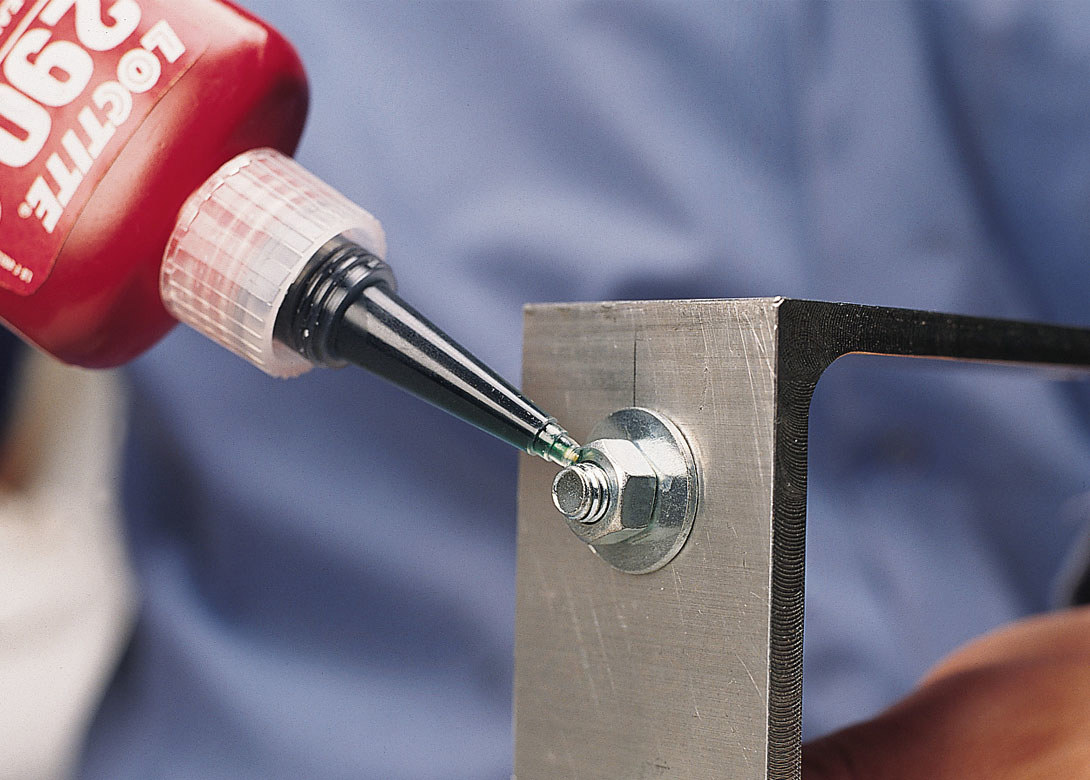
Threaded assemblies, subjected to load and vibrations, are often locked against self-loosening by either a mechanical locking device or an adhesive thread locker; or a combination of both. Here, Henkel Engineering Adhesives looks at a Japanese solar plant, which chose LOCTITE® adhesives to lock and seal threaded fasteners on their solar panels as part of ongoing maintenance procedures.
The merit of this is easy to understand when the assembly is in a motor driven machine where obvious vibration can cause an unlocked nut and bolt to gradually unwind. But what about a completely static object like a solar panel? The short answer is no, it is not. Panels are exposed to a variety of weather conditions and wind will cause enough vibration for the panel mounting bolts to loosen over time. Additionally, the panels are subject to thermal cycling, they are directly exposed to sunshine, shade and night-time temperatures as well as seasonal variations. The metal bolts therefore expand and contract with the changes in temperature, leading to an additional loss of torque.
A Japanese solar power plant decided to take action to prevent this happening when they assessed the loss of revenue for the time that panels were out of commission and the increased maintenance costs involved in rectifying bolt failure. The solution was a specific adhesive thread locker that could be applied to already assembled nuts and bolts.
The company chose to lock its threaded assemblies with an engineering adhesive rather than a mechanical device, such as a spring washer, because it proved the most efficient. This was not only measured by the ease and speed application but also the extended service life of locked assembly.
The adhesive proved the best choice as it is the only thread locking method that addresses the gap that exists between the threads of the nut and bolt. Although imperceptible to the naked eye, this gap is still large enough to allow side to side movement of the bolt within the nut when it is exposed to wind movement; regardless of whether a mechanical locking device has also been fitted. And this problem is exacerbated by thermal cycling.
The adhesive thread locker completely fills the gap between the threads and solidifies into a tough thermoset plastic between the two metal surfaces in the absence of air, preventing any micro-movement. Generally, the adhesive is applied during installation or maintenance while the fastener is being assembled but as the Japanese energy company discovered, a wicking grade version gave them the advantage of securing all their threaded assemblies without having to dismantle them.
The product they chose was LOCTITE® 290 from Henkel, a liquid medium/high-strength thread locker for locking and sealing threaded fasteners. Because of its low viscosity and capillary action, the adhesive actively creeps in between the threaded surfaces. This meant engineers could apply the adhesive to the nuts and bolts in situ, saving significant maintenance time in the process and creating assemblies that were both long lasting and corrosion resistant.

Having spent a decade in the fastener industry experiencing every facet – from steel mills, fastener manufacturers, wholesalers, distributors, as well as machinery builders and plating + coating companies, Claire has developed an in-depth knowledge of all things fasteners.
Alongside visiting numerous companies, exhibitions and conferences around the world, Claire has also interviewed high profile figures – focusing on key topics impacting the sector and making sure readers stay up to date with the latest developments within the industry.





